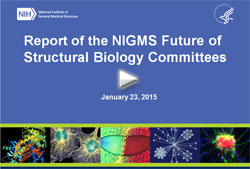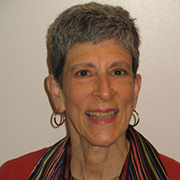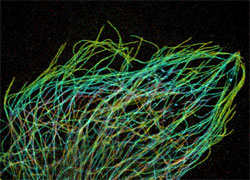I am pleased to announce the availability of the new NIGMS strategic plan. This document outlines many of the priorities and activities that the Institute will pursue over the next 5 years. It’s designed as a framework to both codify and focus our efforts, while still allowing us the flexibility to pursue untapped opportunities in areas relevant to our mission.
The plan, which incorporates valuable input from the scientific community, highlights the goals and objectives listed below. It also contains specific implementation strategies for each objective.
- Maximize investments in investigator-initiated biomedical research to drive fundamental scientific discoveries that advance understanding of human health and disease.
- Invest in and sustain a broad and diverse portfolio of highly meritorious research.
- Promote the ability of investigators to pursue new research directions, novel scientific insights and innovative ideas.
- Support the development of a highly skilled, creative and diverse biomedical research workforce.
- Assess Institute research training and education programs and policies to ensure that they achieve positive outcomes related to the NIGMS mission.
- Promote the identification of best practices to continually improve the quality of research training activities.
- Support the development of and access to essential research tools, resources and capabilities for biomedical research.
- Support access to essential research resources and the development of new technologies that enable novel scientific advances.
- Continue the development of institutional research capacities and communities.
- Advance understanding of fundamental biomedical research and the NIGMS role in supporting it.
- Use a broad range of approaches to inform the public about NIGMS goals, activities and results.
- Continue to engage in an open dialogue with the scientific community and other stakeholders about NIGMS programs, processes and policies.
In addition, the plan includes a goal related to the optimization of Institute operations.
Finally, the plan reiterates our commitment to the stewardship of taxpayer funds and an atmosphere of open dialogue, collaboration and shared responsibility with the scientific community. In that spirit, we welcome suggestions to help us become as efficient and effective as possible in the pursuit of our mission.


 I recently had the opportunity to talk to Phil Bourne, NIH’s associate director for data science, about some of the current Big Data to Knowledge (BD2K) initiative activities. I asked him how they tie together his vision of a digital enterprise for biomedical research and how they might benefit NIGMS grantees.
I recently had the opportunity to talk to Phil Bourne, NIH’s associate director for data science, about some of the current Big Data to Knowledge (BD2K) initiative activities. I asked him how they tie together his vision of a digital enterprise for biomedical research and how they might benefit NIGMS grantees.
 similar to the one that has been supported through PSI.
similar to the one that has been supported through PSI. I’m delighted to tell you that
I’m delighted to tell you that 
